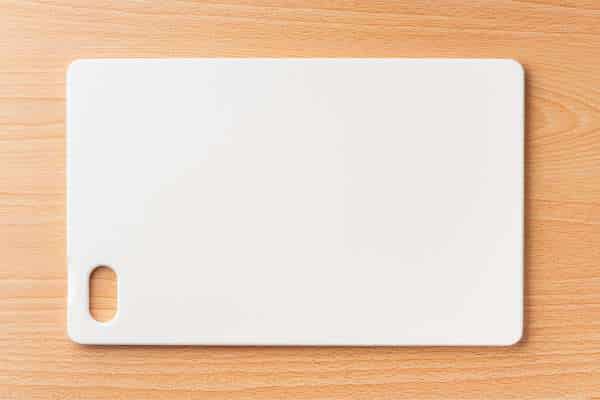Choosing the right wood for a cutting board is crucial for both functionality and longevity. “What is the Best Wood for Cutting Board?” is a question every home cook and professional chef asks when looking for a durable, safe, and knife-friendly surface. The wood type impacts not only the board’s appearance but also its resistance to wear and moisture. From maple to walnut, teak to beech, each wood brings unique qualities to the table. This guide explores the top choices, comparing their benefits and drawbacks, so you can select the best wood to meet your kitchen needs and enhance your cooking experience. Dive in to find your ideal cutting board material!
The Qualities of an Ideal Cutting Board Wood
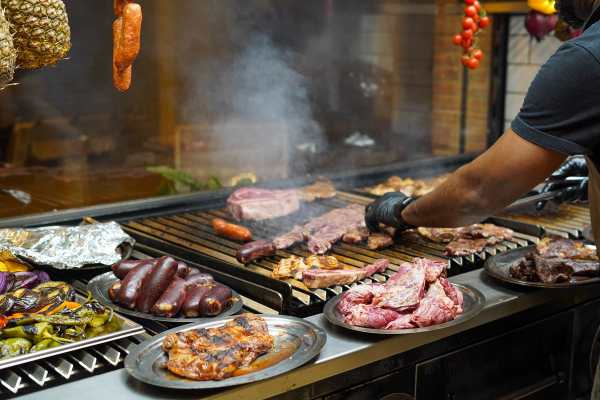
The best wood for a cutting board combines specific qualities that enhance durability and safety. Hardness is essential, as it balances longevity and knife-friendliness without dulling blades. Grain type also matters; tight grains reduce cracks and prevent bacteria buildup, making the board more sanitary. Low porosity in wood like maple and teak helps resist moisture, which minimizes warping and microbial growth. Additionally, certain woods have natural antibacterial properties, providing an added layer of food safety. These qualities not only ensure a cutting board that withstands daily use but also one that remains a reliable kitchen essential for years. Choosing wisely brings both functionality and hygiene to your culinary workspace.
Hardwood vs. Softwood: Which is Better?
Hardwood and softwood have distinct characteristics that impact their suitability for cutting boards. Hardwoods, like maple and walnut, offer durability and density, making them resilient to scratches and dents from knife use. Their tight grain structure helps resist moisture, reducing the risk of bacteria growth—ideal for food safety. Softwoods, such as pine or cedar, are less dense, which means they can easily dent or scratch, shortening their lifespan as cutting boards. Although softer on knives, softwoods are generally more porous, absorbing liquids quickly and increasing maintenance. For a long-lasting, sanitary surface, hardwoods are typically the better choice for cutting boards in both home and professional kitchens.
Edge Grain Cutting Boards
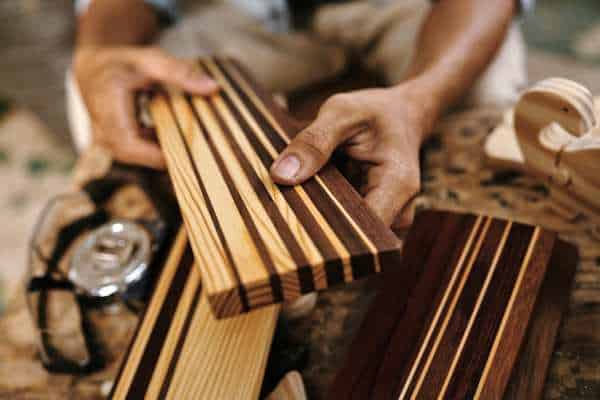
End grain and edge grain cutting boards vary in both their construction and visual appeal. End grain boards are crafted with the wood grain oriented upward, resulting in a durable, self-healing surface that is gentle on knives. In contrast, edge grain boards utilize the side grain of the wood, providing a sleek, streamlined appearance, although they may offer slightly less durability. Hardwoods like maple, walnut, and cherry are ideal for end grain boards due to their strength and knife-friendly nature, while teak and beech are favored for edge grain boards, delivering a sturdy, resilient surface. Selecting the appropriate grain type requires careful consideration of aesthetics, durability, and the intended use of the board in the kitchen.
Top Wood Options for Cutting Boards

Selecting the best wood for a cutting board, several options stand out for durability, aesthetics, and functionality. Maple is a popular choice, known for its hardness, fine grain, and resistance to bacteria. Walnut offers a rich, dark color and a gentle surface that’s easy on knives. Beech, with its durability and affordability, is another great option, providing a smooth, reliable surface. For those needing extra moisture resistance, teak brings natural oils that guard against water damage. Each wood type has unique qualities, making them excellent choices for different kitchen needs. Find the one that fits your cooking style and enhances your kitchen experience.
Maple: The Popular Choice
Maple stands out as a top choice for cutting boards due to its remarkable durability, smooth fine grain, and low porosity. These qualities make it an excellent surface, resisting cuts and scratches while being gentle on knives. North American Hard Maple, in particular, is highly rated for food safety, as its dense structure helps block bacteria and moisture absorption, ensuring a cleaner and more hygienic workspace. The light color of maple also highlights cleanliness, offering a classic, professional look that fits well in any kitchen. Reliable, safe, and long-lasting, maple cutting boards are ideal for those seeking a dependable and high-quality culinary tool.
Walnut: A Stylish and Functional Option
Walnut is a stylish and functional choice for cutting boards, known for its rich, dark color that brings a touch of elegance to any kitchen. Its moderate hardness strikes a perfect balance: tough enough to withstand daily use yet gentle on knives, reducing wear on blades. Walnut’s fine grain and smooth surface make it visually appealing, adding a warm, sophisticated look to countertops. Additionally, walnut’s durability and natural resistance to moisture help it stand the test of time, making it a favorite among chefs and home cooks alike. This combination of aesthetics and functionality makes walnut an excellent choice for a high-quality cutting board.
Beech: Durable and Affordable
Beech wood offers a durable, reliable choice for cutting boards, thanks to its fine grain and dense structure, which resists scratches and dents. Known for its affordability, beech provides an excellent balance of quality and cost, making it accessible and popular among both casual cooks and professionals. The wood’s smooth texture makes it easy to clean and maintain, adding to its appeal for long-term kitchen use. Its widespread availability further enhances its reputation as a practical choice, ensuring that you get a quality board without breaking the bank. For those seeking durability and value, beech is a top contender for cutting board material.
Teak: Resistant to Moisture
Teak is a popular choice for cutting boards, known for its natural oil content, which offers exceptional moisture and bacteria resistance. This durable wood stands up to heavy-duty use, making it ideal for frequent cooks or professional kitchens. Its dense grain and natural oils help prevent water absorption, reducing the risk of warping and bacteria buildup. Though teak’s high-quality properties come with a premium price, its long-lasting performance and ease of maintenance make it a worthwhile investment. For those seeking a sturdy and hygienic cutting surface, teak provides both functionality and a sleek, rich appearance, ideal for any kitchen.
Other Notable Woods for Cutting Boards (e.g., Cherry, Bamboo)
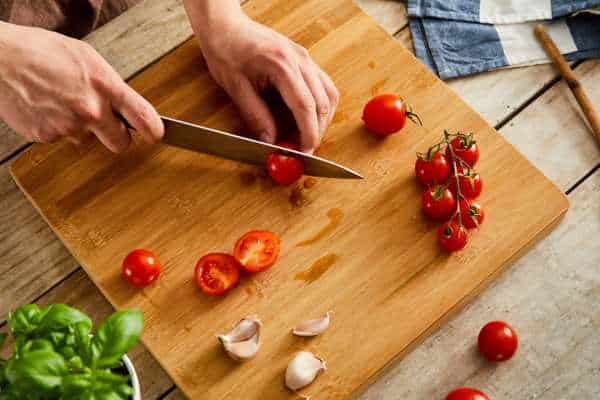
Other notable woods for cutting boards include cherry and bamboo, each with distinct benefits. Cherry wood stands out for its rich color and smooth grain, offering a touch of elegance to any kitchen. It’s also moderately durable, though softer than options like maple, meaning it’s gentle on knives but may show wear more quickly. Bamboo, on the other hand, is an eco-friendly choice due to its rapid growth rate and renewable nature. It’s a harder material, providing durability, yet it can be tougher on knives over time. Both woods balance aesthetics with functionality, catering to those seeking environmentally conscious yet stylish cutting board materials.
Factors to Consider When Choosing Wood for Your Cutting Board
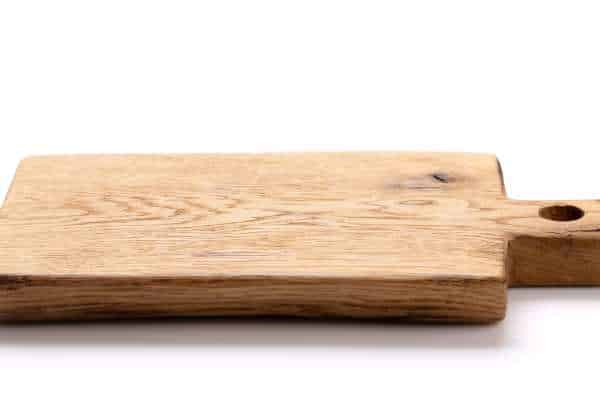
Selecting the best wood for a cutting board, consider key factors that impact durability and usability. Wood hardness plays a critical role in knife-friendliness and longevity, as harder woods resist cuts while softer woods can protect your knife edges. Maintenance is also essential; low-porosity woods often require less upkeep and resist bacteria better. Visual preference can enhance kitchen aesthetics, with options from light maple to rich walnut. Budget is another factor, as prices vary across wood types. Matching wood to intended use is wise—opt for harder, durable woods for daily cooking and softer, visually appealing options for decorative boards. Choose wisely for a cutting board that fits both form and function.
Conclusion
Finding the best wood for a cutting board depends on balancing durability, maintenance, and personal style. With options like maple, walnut, and teak, each wood type offers unique benefits tailored to different kitchen needs. Considering factors such as hardness, upkeep, and appearance helps ensure your board lasts and complements your space. Choosing high-quality wood not only improves functionality but also enhances your cooking experience. By focusing on what fits your lifestyle and preferences, you’ll select a cutting board that’s both practical and beautiful. Explore these wood options to find the ideal surface for your kitchen, crafted to serve you well over time.

